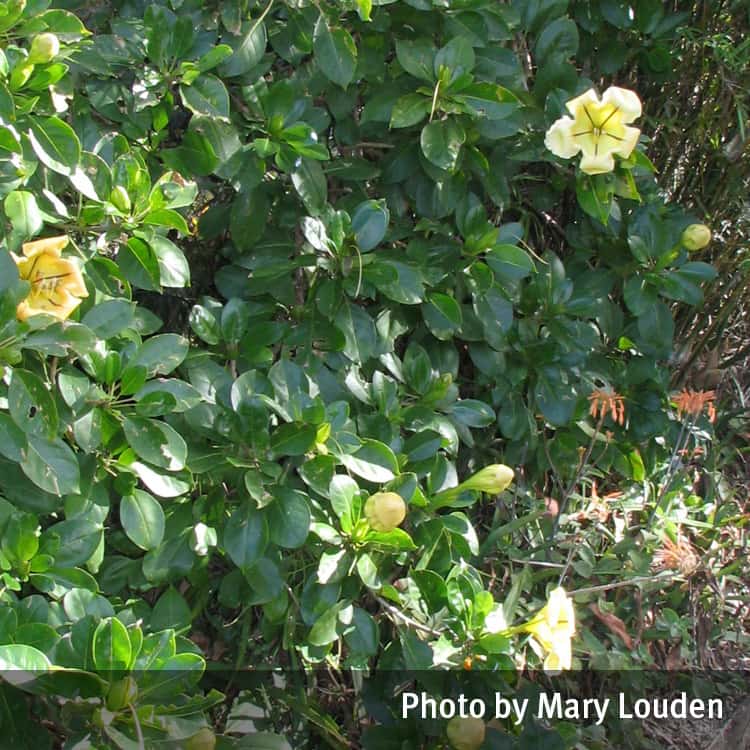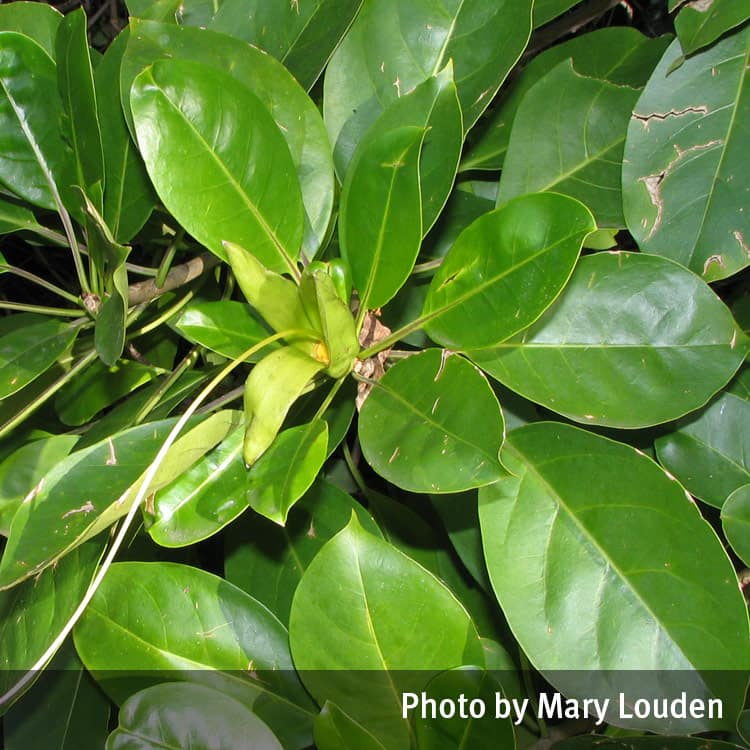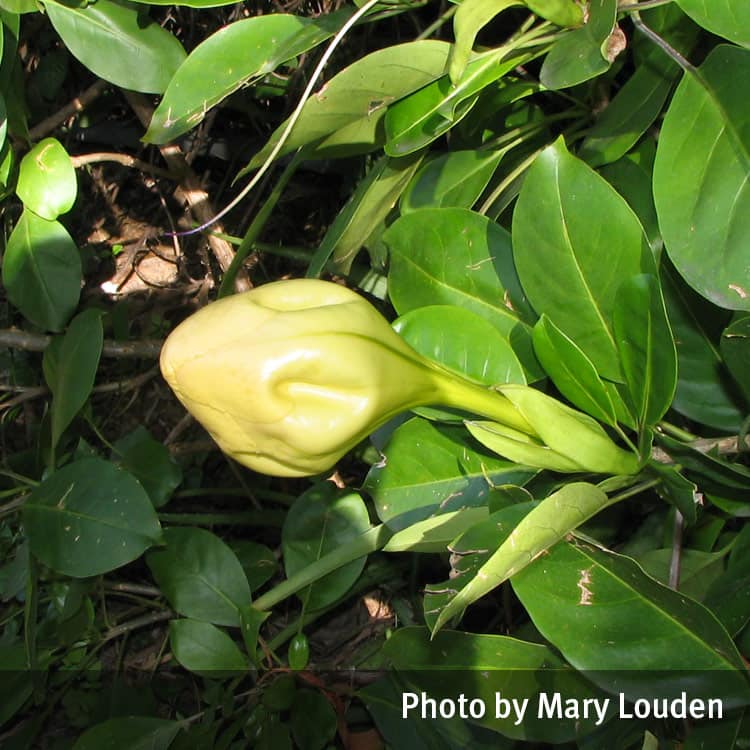For all eye exposures rinse the eye with water for 15 minutes and then seek urgent medical assistance. Seek medical assistance for all ingestions.
Description
A large woody vine cultivated as an ornamental.
The flowers, which open mostly at night, are large, cup-shaped, white to yellow in colour, sometimes with purple veins, and measure up to 25cm in length. The flowers are strongly perfumed at night.
The leaves are up to 15cm long and 7cm wide, and can sometimes be variegated in colour.
Toxicity
Symptoms
All parts of the plant are thought to be toxic. If ingested, symptoms may include nausea, vomiting, diarrhoea, headache, dilated pupils, temperatures and delirium.
Images



Details
Common name: Chalice vine
Botanical name: Solandra maxima
Other common names: Golden cup, Trumpet flower
Family: Solanaceae
General description: A large woody vine cultivated as an ornamental.
Flowers: The flowers, which open mostly at night, are large, cup-shaped, white to yellow in colour, sometimes with purple veins, and measure up to 25cm in length. The flowers are strongly perfumed at night.
Leaves: The leaves are up to 15cm long and 7cm wide, and can sometimes be variegated in colour.
Fruit/Berries: The fruit are fleshy, nearly round and up to 6cm in diameter, white to pale-yellow, with many small seeds inside.
Other: The sap has been recorded as being an irritant, either in the eye or on the skin.
Last updated: July 2023